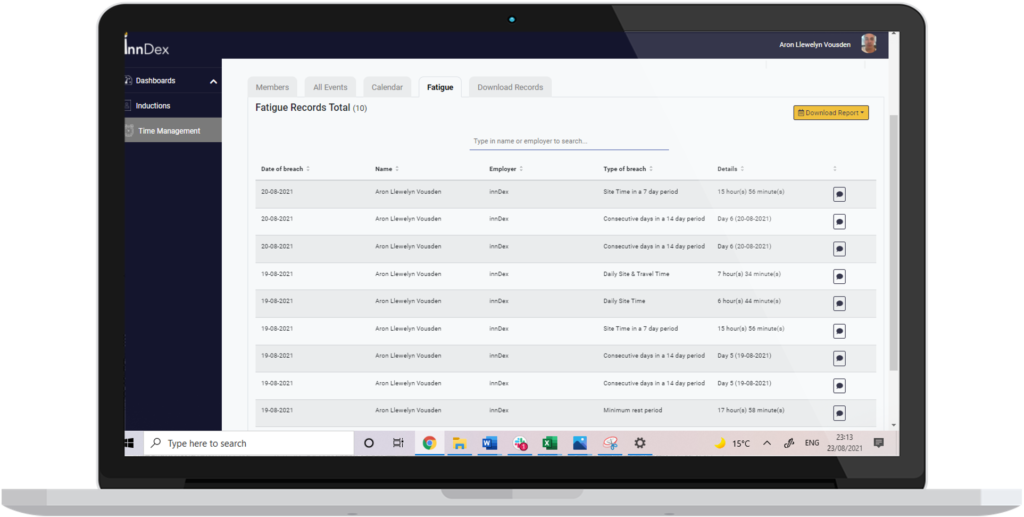The Skills Crisis has been an issue in our industry for years, only now its progression has been catalysed not only by Brexit but also by the pandemic.
The Construction bulk-age demographic (workforce aged between 45-55) has taken a massive plunge this year, with many experienced workers leaving the industry and opting either for early retirement or giving a chance at a different career.
The Employment Arithmetic
- The UK has lost 1.3m EU workers since Brexit
- We have 1.8m fewer 15-24 year olds (reduced birth rate 1997-2006)
- There are currently 1.3 million advertised jobs – 43,000 in Construction
- Around 200,000 55-60 year olds have retired early
- Supply has fallen by 3.3 million, demand increased by 1.3 million
- There are 1.5m unemployed
But this isn’t all, the density of migrant workers has also notably decreased, with 20,000 of them leaving construction jobs just in London. On a national scale, this equates to one migrant worker for every seven deciding to leave the sector.
The government’s Build Back Better plan is precarious, and as time passes it’s only becoming more and more unrealistically ambitious. Waiting the crisis out to see if people will actually come back is simply not an option anymore.
The biggest constraint on growth is labour. Of our future workforce, there are 200,000 people aged between 15 and 24 who are unemployed – many of whom will demand changes to current work practises, live in diverse locations, and have insufficient skills. The UK is effectively at full employment with wage growth out-stripping supply which will keep inflation up.
Contractors are faced with a near-impossible tradeoff:
- Outsource workers nationwide to maintain their project volume, sacrificing their company’s carbon footprint and cutting on their progress towards the net-zero achievement.
- Take on fewer projects and invest into local and young up and coming talent training. Incurring greater losses than revenues even if only temporarily.
We decided to catch up with a couple of other industry professionals, to discuss their views and opinions on the matter:

“During my career in construction so far I can confidently say that by better understanding the local demographics and skillset of your talent pool we can further enable local economies by providing sustainable jobs.
As an industry we leave a legacy on the communities we work in, the schools we build to educate our children, the roads we build to connect families or the hospitals we develop to treat the nation.”
Alex Gosney – CEO at Nutral (ex. Laing O’Rourke Procurement Operations Lead)

“The skills shortage in the construction industry can be attacked in a number of ways, but a key one has to be accessing the talent in underrepresented groups. Currently there is only 1 woman for every 100 men on site, and just 3.2% of workers identified as BAME. We need real support systems in place at an early stage to empower young people of all backgrounds to acquire the skills needed to get on site. The labour shortage is actually a great opportunity to increase gender and race diversity in construction, and data can help drive these efforts. Moreover, diversity pays. Businesses with strong diversity indices have proven upsides on growth. This could be a massive win-win for the workforce and the industry as a whole.”
Isabelle Gough – CEO and Co-Founder at Cercula
By now, you know that I’m a firm believer in the strategic use of data to overcome industry challenges. So why not apply the same principle to attempt to at least mitigate the labour crisis that the Construction sector is facing?
Better understanding your workforce, their individual skill set and qualifications and improving the collection and visibility of project data is the first step towards retaining your current workforce successfully.
When considering people’s health on top of their safety, the management of fatigue should be a priority. innDex allows businesses to easily plan their workforces’ shifts and monitor cumulative working and commuting times, enabling automatic real-time notifications when working Hours Policies/planned shifts are being breached or are about to be breached.
Employers have a legal duty to manage risks from fatigue so we designed our fatigue management software to enable companies to implement proper fatigue management procedures. Project Managers can then download fatigue logs and reports and analyse the data to see what’s actually happening and take evidence-based actions.
This will not only improve labour productivity and wellbeing in the short run, but it will also help retain the current workforce successfully in the long run.

SHARE THIS ARTICLE
RECENT POSTS
-
 Construction Supply Chain DisruptionJune 10, 2020/0 Comments
Construction Supply Chain DisruptionJune 10, 2020/0 Comments -
 Construction NEEDS to Invest in TechnologyMarch 29, 2020/
Construction NEEDS to Invest in TechnologyMarch 29, 2020/ -
 5 ways innDex combats behavioural/social management issuesAugust 2, 2022/
5 ways innDex combats behavioural/social management issuesAugust 2, 2022/







